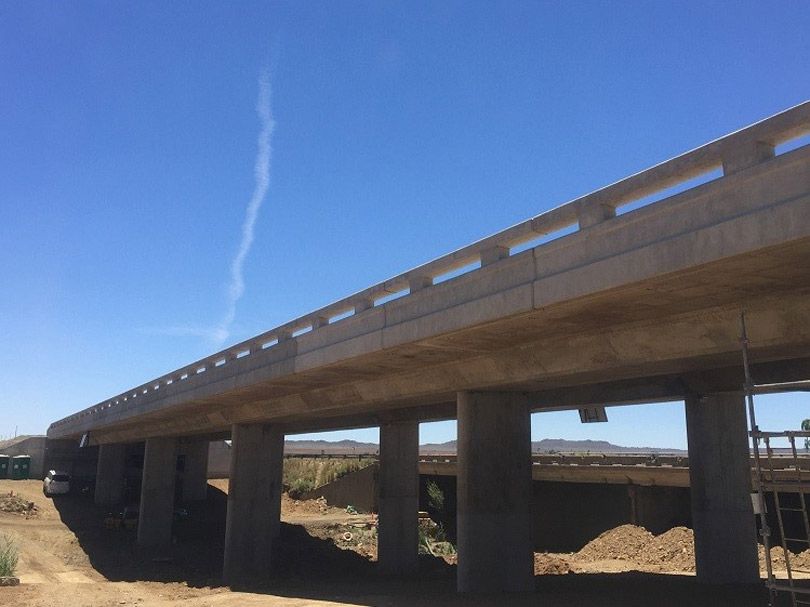
The Van Zyl Spruit Bridge in the Free State
The Fulton Awards are bestowed twice a year by the Concrete Society of Southern Africa NPC to recognise and honour excellence and innovation in design and other uses of concrete. The Innovation in Concrete category recognises initiatives in the development or use of totally new materials, techniques, technologies, applications, designs and/or concepts, using concrete as the principal material.
The Van Zyl Spruit Bridge was constructed on the N1, near Trompsburg in the Free State, without any expansions joints or bearings. It is the longest integral bridge in South Africa, measuring approximately 90m in length. Ms Skorpen, working with technicians Mr Rikus Kock and Mr Sarel Coetzer, and with Prof. Elsabe Kearsley, equipped the bridge with instrumentation to measure approximately 500 channels for the South African National Roads Agency (SANRAL).
The instruments include strain gauges to measure strains in the bridge deck, as well as temperature sensors, tilt meters and earth-pressure sensors behind the bridge abutments. Furthermore, a pilot study is being undertaken on the bridge, in collaboration with the Cambridge Centre for Smart Infrastructure and Construction, to test a fibre-optic strain measurement system. Fibre-optic strain measurement allows strains to be recorded with unprecedented accuracy and resolution.
Data from the instrumentation system is continuously recorded and relayed to the Internet from where it can be downloaded by researchers. The data will reveal how long integral bridges will behave under South African conditions, where temperature variations can be significant and the climate is very dry. The benefits of this research will lead to a better understanding of the behaviour of integral bridges and hopefully the wider use of integral bridges in South Africa, thus saving employers ongoing costs, especially for bearings and joint maintenance over the life of the bridges.
This project demonstrates how civil engineers can benefit by applying the latest technology to learn about the behaviour of unusual structures, allowing designers to design these structures with more confidence.
By monitoring this bridge it is hoped that a better understanding will be gained of integral bridge behaviour in a South African context. This type of structure is favoured owing to substantially reduce maintenance and life cycle costs as it eliminates the use of bearings and expansion joints, which are the elements of a bridge structure that require periodic replacement.
